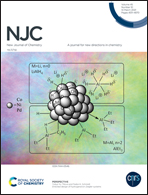Directed design of hydrogenation Ziegler systems
Abstract
The paper reports on multicomponent (Ziegler) catalytic systems based on acetylacetonate complexes of cobalt, nickel or palladium and various aluminum-containing cocatalysts of general formula M(acac)2–Red (where M = Co, Ni, Pd; Red = AlEt3, LiAlH4, AlEt2(OEt), LiAlH(tert-BuO)3), which are active in alkenes hydrogenation under mild conditions (T = 30 °C, P = 2 atm). The key features (size, composition, nature of the ligand shell) of metal-containing nanoscale particles formed during the interaction of the initial components under inert medium and hydrogenation catalysis are considered. Also, the dynamics of the reaction solution changes in the course of catalytic processes as well as the kinetic parameters (activity, productivity, selectivity) of alkenes hydrogenation are described. The models of nanoparticles formed under the hydrogenation catalysis conditions during the interaction of M(acac)2–Red (where M = Co, Ni, Pd; Red = AlEt3, LiAlH4) are discussed. The role of proton-donor compounds (contained in the initial complexes of transition metals or specially introduced into the reaction systems) in the formation of catalytically active sites is explained. In particular, it is shown that the activating effect of these compounds is associated with alcoholysis of the cocatalyst and products of its catalytic decomposition, which are located on the surface of transition metal nanoparticles. A general scheme of activation of the [M]n particles formed by the interaction of M(acac)2 with AlEt3 (M = Ni and Co) is presented. The concept for the directed design of Ziegler catalytic systems is proposed. In order to evaluate the application scope of this concept, the reasons of different catalytic activity and productivity of bimetallic nickel–copper catalysts of the same composition, obtained by sequential and simultaneous reduction of Ni(acac)2 and Cu(acac)2 by LiAlH4, are revealed. In addition, a number of priority issues that should be addressed are discussed to highlight the prospects for the further development of this field of catalysis.

- This article is part of the themed collection: 2021 Focus and Perspective articles


 Please wait while we load your content...
Please wait while we load your content...